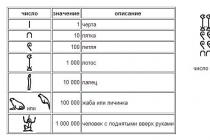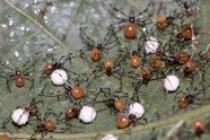The spider web is considered one of the strongest and most elastic fibers in the world, and it also has antiseptic properties. For many years, scientists from different countries have been trying to establish mass production of this material in order to make body armor, clothing, bandages and other necessary things from it. But are they close to success in this difficult endeavor?
American scientists have come to the conclusion that the most durable body armor could be made from cobwebs, which have special strength and elasticity. In addition, experts from the University of California, who have devoted decades to studying their subject, believe that spiders produce a silk material so durable that cables made from it would outperform similar products made of precious metals.
The cobweb, which, by the way, in the animal world is found not only in spiders, but also in a number of insects, ticks and millipedes, is a unique invention of nature. Its structure is rather complicated, although in general terms it can be characterized as follows. Any spider web has an inner core made of protein (it is called spidroin, from English spider, that is, a spider), called fibroin, and concentric layers of glycoprotein (that is, formed from carbohydrates attached to a protein) nanofibers surrounding this nucleus.
Fibroin, which is a viscous, syrupy liquid that polymerizes and hardens in air, makes up about two-thirds of the web's mass. Scientists managed to find out that two amino acids are especially often found in fibroin proteins: glycine (H 2 NCH 2 COOH) and alanine (CH 3 CHNH 2 COOH). It is the latter that makes the spider thread super strong.
It turns out that when several polyalanine regions of different proteins approach each other, they begin to stick together. Further, this stuck together piece coils into a supercoil, and this structure connects the polyalanine regions of different protein molecules extremely tightly. As chemists say, the strength of such a fiber becomes close to theoretical, that is, to the breaking strength of chemical bonds.
It was found that in the web, the polyalanine sections are connected to each other not at one point, like metal crystals in an iron wire, but "with an overlap", that is, at a thousand points at the same time. Breaking such a coupler is more difficult twenty times than a copper wire. Interestingly, with such a strong hitch, the spider's thread continues to remain elastic. But this is exactly the responsibility of another "mass" amino acid - glycine.

Areas where there is a lot of glycine form a dense tangle, in which polyalanine structures are mounted, as it were. If you stretch this ball, its entropy (that is, the degree of chaos) will decrease, and free energy will increase. But, as soon as the tension is removed, the system returns to the state with the maximum entropy and the minimum free energy, that is, back into the ball. It turns out that the elasticity of the web from a physical point of view has the same nature as the elasticity of rubber.
In addition to the protein and carbohydrate component, the web also contains inorganic substances, for example, hydrogen phosphate and potassium nitrate. It is believed that they are some kind of antibiotic that protects the spider's thread from fungi and bacteria. It is they who provide the antiseptic properties of this substance, which people have known about since the Stone Age.
So, as you can see, the web could well be useful to a person. And not only for body armor. Scientists believe that it would make light and comfortable clothing, parachutes, carpets and dressings. The only problem is that getting it now is quite difficult. Still, after all, according to the calculations of arachnologists, in order to get just one meter of fabric from a web requires the "work" of more than 400 spiders!
These creatures, in turn, as a rule, cannot stand each other, therefore it is quite difficult to keep them together. That is why the attempt to organize a spider farm for the first time (this happened 300 years ago, in the 18th century) failed. The spiders, lovingly collected by the French entomologist Bon de Saint-Ilet, simply ate each other. And the point was not that the food ran out, such is the nature of these arthropods.
However, not all of them are such misanthropes (or, more precisely, misarachs). There are also social spiders that live in large colonies on one wide spider web. Such are, for example, Theridionnigroannulatum from South America (their colonies contain several thousand individuals, and the diameter of the net can exceed five meters). By the way, in ancient times, Paraguayan and Brazilian Indians made fabrics from its web. Captive breeding of African Stegodyphus mimosarum, whose individuals build a common bag-shaped nest (up to one and a half meters in length) and all hunt together on its surface. However, as luck would have it, the web of these species is not of very good quality, it is elastic, but it breaks more easily than that of single hunters (it is believed that the highest quality web is woven by representatives of the genus Nephila, and they are just prone to loneliness).

In addition, there is also a method for personal milking spiders. To do this, the spider is glued to the table with adhesive tape by its legs, after which a piece of cobweb is carefully squeezed out of its spider glands. It is attached to a glass rod, which is then inserted into a drill and turned on at low speed. After five minutes, the spider is completely milked out. As you can see, with this method, spiders do not need to directly contact each other; between milking, they can exist in personal enclosures. However, the yield of the final product with this method of production is very small - a cobweb bundle weighing only a few milligrams is obtained.
So, as you know, keeping spiders is quite difficult and expensive. That is why scientists have recently been trying to mobilize other living beings for the production of webs. At the end of the last century, the cobweb protein gene was deciphered. Since then, biologists have been trying to insert it into a wide variety of wildlife, from bacteria to goats.
It would seem that the easiest way would be to modify bacteria, it is easy from a technical point of view and quite economical, since their maintenance is inexpensive. Here, however, microbiologists are faced with one unexpected problem. As we remember, due to the presence of a number of substances in its composition, the spider web has antibacterial properties. It turned out that after a while the bacteria producing the cobweb died from their own product. In addition, it was found that this gene is quite complex and cumbersome, so the bacteria tried to get rid of it, which they often succeeded in doing.
Recently, Canadian scientists tried to introduce this gene into the cells of a domestic goat ( Capra aegagrus hircus), so that spidroin appears in the milk of this animal, from where it can be easily extracted. However, they were disappointed - the amount of this protein in milk turned out to be negligible, even less than it was obtained with personal milking of spiders.
Another path was taken by German specialists from Gatersleben, as well as the domestic molecular biologist Vladimir Bogush, a leading employee of the protein engineering laboratory of the State Research Institute of Genetics. These researchers introduced spider-like genes into plants such as potatoes and tobacco. They managed to obtain in potato tubers and tobacco leaves up to two percent of soluble proteins, consisting mainly of spidroin. However, as further studies showed, the introduced genes did not take root in plants and were soon excised from their genome.
Given the previous bad experience, Bogush's group decided to try to introduce the spidroin gene into microscopic yeast fungi ( Saccharomycetales). Here the gene has taken root quite well. So, at present, these fungi are the only "biofactory" in the world for the production of artificial webs.
Such a web is made as follows - first, the biomass is built up, then yeast cells containing spidroin are destroyed. Further, this protein is extracted from the resulting mixture, after which it is isolated in pure form, dried and a substance is obtained that is somewhat reminiscent of cotton wool. The difficulty, however, lies in the fact that it is no longer possible to spin a thread out of it - after all, the fibroin had already hardened by that time. And from a lump of this "cotton wool" no body armor, of course, can be made.
Today, body armor is an integral part of a serviceman's outfit. But it was not always so. For a long time, a soldier on the battlefield was protected only by the thin fabric of a uniform or tunic.
Body armor is a personal protective equipment designed to protect a person (mainly his torso) from the effects of firearms and cold weapons. It is made of various materials, the main feature of which is the ability to withstand the impact of a bullet, fragment or blade.
Nowadays, the value of a soldier's life has increased many times over, therefore, many countries around the world are engaged in the creation of new, more reliable and perfect species. Very serious funds are spent on these developments.
Bulletproof vests are different, they are divided into classes: a light bulletproof vest will protect you from a pistol bullet, knife and shrapnel, and heavy army bulletproof vests can also stop a Kalashnikov assault rifle bullet. Concealed body armor can be worn under clothing, which is great for intelligence officers and bodyguards.
How effective are body armor on the battlefield? One example can be given: according to the statistics, which was conducted by the US Army, the use of body armor by military personnel reduced the number of injuries by 60%.
However, before talking about new developments, a few words should be said about the history of this personal protective equipment.
A bit of history
By about the middle of the 16th century, the development of firearms led to the fact that plate armor could no longer provide sufficient protection for the fighter. In addition, at this time, Europe was moving to massive recruitment armies, which was quite problematic to provide with high-quality armor. Only cuirassiers and sappers retained their armor.
After the appearance of machine guns and the improvement of artillery, the troops began to suffer monstrous losses. The problem of protecting infantrymen has become aggravated. And then the military again remembered the cuirass.
The revival of cuirasses began at the turn of the XIX-XX centuries. In 1905, the Russian military department ordered 100 thousand cuirasses in France. However, the foreign product turned out to be of poor quality and did not provide an adequate level of protection for the soldier. There were also domestic developments in this area, and often they surpassed their foreign counterparts.
Many variants of cuirasses were developed during the First World War. Practically all the countries participating in the conflict were engaged in this. Cuirass were most often equipped with sapper and assault units. Reviews of this remedy have been very mixed. On the one hand, the cuirass really protected from bullets, shrapnel and bayonet strikes, but on the other hand, its protective properties depended on the thickness of the metal. Light armor was practically useless, and too thick - made it difficult to fight.
During the First World War, the British created something similar to the modern body armor. It was called the Dayfield body shield, but this protective ammunition was not purchased by the British army either. Those interested could purchase it for their own money, and the body shield cost a lot. It was sewn from dense fabric, in four compartments on the chest there were armored shields, which held splinters and pistol bullets well. In addition, the shield was quite comfortable to wear.
Dexterous businessmen made good money on body shields, very often the family gave all their savings to protect their husband, father or son at the front.
Also worth mentioning is the Brewster Body Shield or "Brewster's Armor" - a protective kit that consisted of a deaf helmet and a cuirass. It provided good protection against bullets and shrapnel, but at the same time weighed 18 kg.
The development of body armor and cuirasses continued in the 30s, and during the next World War, but it did not work out to create a truly light, comfortable and reliable body armor. Mention may be made of the bulletproof steel breastplate, which was developed for assault brigades in the USSR, as well as special anti-fragmentation vests, created for bomber crews in Great Britain.
In its modern form, the body armor appeared in the early 50s, they were invented by the Americans and were first used during the Korean War. They calculated that most of the injuries are due to the impact of shell fragments and mines, which do not have too much kinetic energy. To protect against these factors, a body armor was created from several layers of high-strength fabrics - nylon or nylon.
The first mass body armor M1951 was produced in the amount of 31 thousand pieces, it was made of nylon and could be reinforced with aluminum inserts. The weight of the body armor was 3.51 kg. Its creators did not set themselves the task of holding bullets, but it did a good job of protecting the fighter from shrapnel.
The massive distribution of body armor in the US Army began during the Vietnam War. The standard American army body armor of that time was the M-1969 (3.85 kg), made of nylon threads.
At the same time, the Americans began to develop personal protective equipment for pilots of aircraft and helicopters.
In the 70s, the first Barrier Vest body armor for law enforcement officers was created in the United States.
In the USSR, the first 6B1 body armor was accepted for supply in 1957, but it was never put into mass production. It was planned to expand its mass production only in the event of a major war.
After the outbreak of hostilities in Afghanistan, the entire 6B1 stock was immediately transferred to the active army. However, for difficult mountain conditions, this body armor turned out to be too heavy. It was decided to develop a new means of protection, which would have less weight. These works were carried out by specialists from the Moscow Research Institute of Steel. In the shortest possible time, they created a Soviet body armor of the first generation 6B2, which went through the entire Afghan war.
The main protective element 6B2 were small titanium plates, packed in special pockets. The bulletproof vest reliably protected from shrapnel, but an AK-47 bullet pierced it at a distance of 400-600 meters.
Several bulletproof vests have been developed over the years of the Afghan war. The main direction of their improvement was to increase the protective characteristics. Dushmans very rarely used artillery and mortars; small arms were the cause of most of the injuries of Soviet servicemen.
In 1983, the first Soviet bulletproof body armor 6B3T appeared, in 1985 - 6B5 "Uley", a universal body armor, which, depending on the configuration, could provide a different level of protection.
In the West, the development of body armor followed a slightly different path. The Vietnam War can be called traditional (as opposed to Afghanistan) and the number of shrapnel wounds significantly exceeded the losses from small arms. Therefore, the Americans were in no hurry to develop bulletproof body armor. In addition, in the mid-70s, a new promising material for soft body armor, Kevlar, began to be produced on an industrial scale.
In the early 80s, a new soft Kevlar body armor, the PASGT, was supplied to the American army. This body armor remained the main one for the American army until 2006. However, after the start of operations in Afghanistan and Iraq, the Americans faced the same problem as the Soviet troops in the 80s. For counter-guerrilla actions, a bulletproof vest was needed to provide protection against small arms.
The first such body armor was the RBA, adopted by the US Army in the early 90s. Its main protective elements were small ceramic tiles, laid in a vest made of nylon fabric. The weight of the body armor was 7.3 kg.
In 1999, the US Army received an OTV shrapnel body armor. With the installation of additional protective panels, this body armor can also withstand automatic bullets.
In 2007, MTV body armor with anti-splinter protection was adopted to supply the US Army.
After the collapse of the USSR, work on new types of personal protection was frozen for many years. In Russia, they returned to them only in 1999. Within the framework of the Barmitsa program, a number of body armor of various classes and characteristics was developed.
General device and classification of body armor
Various high-strength materials are used for the production of modern body armor. Usually these are synthetic threads (the so-called ballistic fabrics), metals (titanium, steel) or ceramics (aluminum oxide, boron carbide or silicon). If earlier bulletproof vests could be divided into "soft" (splinterproof) and "hard" (to protect against bullets), now it is not easy to do this.
Modern body armor usually have a modular structure, which allows you to enhance the protection of certain areas with the help of special armor inserts. Light body armor may not have armor inserts and serve as protection only from knives and short-barreled bullets. But it can be used as a concealed wearing body armor, which is perfect for law enforcement officers, bodyguards, and collectors.
Any bulletproof vest should be comfortable and practical in operation, its fabric elements should be highly durable, correspond to their protection class (more on that below) and at the same time have as little weight as possible.
We can name the following areas in which the improvement of body armor is currently taking place:
- Manufacturers began to move away from the idea of creating a universal body armor, suitable for any "occasions". Instead, highly specialized means of protection are created.
- Increase the level of protection and reduce the weight of the product. This is achieved through the use of more advanced materials and improved design of body armor.
- Differentiation of the level of protection for different zones.
- Implementation of protection against non-ballistic factors of destruction in body armor: fire or electric current.
- The tendency to increase the area of protection. In the latest models of body armor, there is usually protection for the shoulders, neck area and groin. Side protection is an almost mandatory feature of the latest models of body armor.
- They try to add elements to the design of body armor to accommodate weapons, ammunition, medicines and other things a soldier needs - such as food rations.
The main criterion for choosing a bulletproof vest is its protection class. It depends on what kind of bullet or shrapnel it can withstand. However, not everything is so simple here either. Here are the most common types of body armor protection classifications:
- GOST R 50744–95 / 1999. This standard of body armor was adopted by the State Standard of Russia in 1999.
- GOST R 50744–95 / 2014. Russian standard adopted by the State Standard of Russia in 2014.
- CEN is a common European standard.
- DIN is the standard for the protection of body armor of the German police.
- NIJ is the standard for body armor of the American National Institute of Justice.
Now let's take a look at several classes of protection for body armor in accordance with different standards.
GOST R 50744–95 / 2014 (Russia):
- 1 class. Should protect against a bullet from a Stechkin pistol (APS) 9x18 mm with a steel core (Pst). Bullet speed 345 m / s, distance 5 meters.
- Grade 2. Pistol "Vector" (SR-1), cartridge 9x21 mm, lead bullet at a speed of 400 m / s, a distance of 5 meters.
- Grade 3. A bulletproof vest of this class should protect against a bullet from a Yarygin pistol 9x19 mm with a heat-strengthened steel core. Bullet speed 455 m / s, distance 5 meters.
- 4th grade. Should provide protection against a shot from an AK-74, cartridge 5.45x39 mm, a bullet with a heat-strengthened steel core, bullet speed 895 m / s, distance 10 meters. And also from a shot from AKM, cartridge 7.62x39 mm, a bullet with a heat-strengthened steel core, speed 720 m / s, distance 10 meters.
- Grade 5. SVD rifle, cartridge 7.62x54 mm, bullet with heat-strengthened steel core, speed 830 m / s, distance 10 m.
- 6th grade. Bullet-proof vests of this class must withstand a shot from an OSV-96 or V-94 rifle of 12.7 mm caliber. Cartridge 12.7x108 mm, bullet with heat-strengthened steel core. Speed 830 m / s, distance 50 meters.
Classes of protection for body armor from the US National Institute of Justice (NIJ):
What's next?
What will body armor be like in the foreseeable future? It is difficult to give an exact answer to this question. There are several interesting developments that may become a reality in the coming years.
Cobweb body armor
Americans are engaged in similar research. It has long been known that spider silk is one of the most durable compounds in nature. It is slightly inferior to Kevlar, but much more elastic than the latter. The US military has allocated $ 100,000 to continue the research, and if they are successful, the scientists will be allocated another million dollars.
Liquid body armor
Another interesting direction in the field of creating perfect armor is the development of body armor based on a special gel, which, upon impact, turns into a solid state. Thus, it seems to absorb the energy of a bullet or a fragment.
Similar work is being carried out in several countries at once, and the developers promise to demonstrate practical results in the near future. In physics, such gels are called "non-Newtonian fluids."
If you are tired of advertising on this site, download our mobile application here: https://play.google.com/store/apps/details?id=com.news.android.military or below by clicking on the Google Play logo. There we have reduced the number of ad units specifically for our regular audience.
Also in the app:
- even more news
- update 24 hours a day
- notifications about major eventsIf you have any questions - leave them in the comments below the article. We or our visitors will be happy to answer them.
The toughest body armor from ... spider webs
The spider web is considered one of the strongest and most elastic fibers in the world, and it also has antiseptic properties. For many years, scientists from different countries have been trying to establish mass production of this material in order to make body armor, clothing, bandages and other necessary things from it. But are they close to success in this difficult endeavor?

American scientists have come to the conclusion that the most durable body armor could be made from cobwebs, which have special strength and elasticity. In addition, experts from the University of California, who have devoted decades to studying their subject, believe that spiders produce a silk material so durable that cables made from it would outperform similar products made of precious metals.
The cobweb, which, by the way, in the animal world is found not only in spiders, but also in a number of insects, ticks and millipedes, is a unique invention of nature. Its structure is rather complicated, although in general terms it can be characterized as follows. Any spider web has an inner core made of a protein (it is called spidroin, from the English spider, that is, a spider) called fibroin, and concentric layers of glycoprotein (that is, formed from carbohydrates attached to a protein) nanofibers surrounding this core.
Fibroin, which is a viscous, syrupy liquid that polymerizes and hardens in air, makes up about two-thirds of the web's mass. Scientists managed to find out that two amino acids are especially often found in fibroin proteins: glycine (H 2 NCH 2 COOH) and alanine (CH 3 CHNH 2 COOH). It is the latter that makes the spider thread super strong.
It turns out that when several polyalanine regions of different proteins approach each other, they begin to stick together. Further, this stuck together piece coils into a supercoil, and this structure connects the polyalanine regions of different protein molecules extremely tightly. As chemists say, the strength of such a fiber becomes close to theoretical, that is, to the breaking strength of chemical bonds.
It was found that in the web, polyalanine sections are connected to each other not at one point, like metal crystals in an iron wire, but "with an overlap", that is, at a thousand points at the same time. Breaking such a coupler is more difficult twenty times than a copper wire. Interestingly, with such a strong hitch, the spider's thread continues to remain elastic. But this is exactly the responsibility of another "mass" amino acid - glycine.
Areas where there is a lot of glycine form a dense tangle, in which polyalanine structures are mounted, as it were. If you stretch this ball, its entropy (that is, the degree of chaos) will decrease, and free energy will increase. But, as soon as the tension is removed, the system returns to the state with the maximum entropy and the minimum free energy, that is, back into the ball. It turns out that the elasticity of the web from a physical point of view has the same nature as the elasticity of rubber.
In addition to the protein and carbohydrate component, the web also contains inorganic substances, for example, hydrogen phosphate and potassium nitrate. It is believed that they are some kind of antibiotic that protects the spider's thread from fungi and bacteria. It is they who provide the antiseptic properties of this substance, which people have known about since the Stone Age.
So, as you can see, the web could well be useful to a person. And not only for body armor. Scientists believe that it would make light and comfortable clothing, parachutes, carpets and dressings. The only problem is that getting it now is quite difficult. Still, after all, according to the calculations of arachnologists, in order to get just one meter of fabric from the web requires the "work" of more than 400 spiders!
These creatures, in turn, as a rule, cannot stand each other, therefore it is quite difficult to keep them together. That is why the attempt to organize a spider farm for the first time (this happened 300 years ago, in the 18th century) failed. The spiders, lovingly collected by the French entomologist Bon de Saint-Ilet, simply ate each other. And the point was not that the food ran out, such is the nature of these arthropods.
However, not all of them are such misanthropes (or, more precisely, misarachs). There are also social spiders that live in large colonies on one wide spider web. These are, for example, Theridion nigroannulatum from South America (their colonies contain several thousand individuals, and the diameter of the network can exceed five meters). By the way, in ancient times, Paraguayan and Brazilian Indians made fabrics from its web. It is also quite promising to breed in captivity the African Stegodyphus mimosarum, whose individuals build a common bag-shaped nest (up to one and a half meters in length) and all hunt together on its surface. However, as luck would have it, the web of these species is not of very good quality, it is elastic, but it breaks more easily than that of single hunters (it is believed that the highest quality web is woven by representatives of the genus Nephila, and they are just prone to loneliness).
In addition, there is also a way to personalize the milking of spiders. To do this, the spider is glued to the table with adhesive tape by its legs, after which a piece of cobweb is carefully squeezed out of its spider glands. It is attached to a glass rod, which is then inserted into a drill and turned on at low speed. After five minutes, the spider is completely milked out. As you can see, with this method, spiders do not need to directly contact each other; between milking, they can exist in personal enclosures. However, the yield of the final product with this method of production is very small - a cobweb bundle weighing only a few milligrams is obtained.
So, as you know, keeping spiders is quite difficult and expensive. That is why scientists have recently been trying to mobilize other living beings for the production of webs. At the end of the last century, the cobweb protein gene was deciphered. Since then, biologists have been trying to insert it into a wide variety of wildlife, from bacteria to goats.
It would seem that the easiest way would be to modify bacteria, it is easy from a technical point of view and quite economical, since their maintenance is inexpensive. Here, however, microbiologists are faced with one unexpected problem. As we remember, due to the presence of a number of substances in its composition, the spider web has antibacterial properties. It turned out that after a while the bacteria producing the cobweb died from their own product. In addition, it was found that this gene is quite complex and cumbersome, so the bacteria tried to get rid of it, which they often succeeded in doing.
Recently, Canadian scientists tried to insert this gene into the cells of a domestic goat (Capra aegagrus hircus), so that spidroin appears in the milk of this animal, from where it can be easily extracted. However, they were disappointed - the amount of this protein in milk turned out to be negligible, even less than it was obtained with personal milking of spiders.
Another path was taken by German specialists from Gatersleben, as well as the domestic molecular biologist Vladimir Bogush, a leading employee of the protein engineering laboratory of the State Research Institute of Genetics. These researchers introduced spider-like genes into plants such as potatoes and tobacco. They managed to obtain in potato tubers and tobacco leaves up to two percent of soluble proteins, consisting mainly of spidroin. However, as further studies showed, the introduced genes did not take root in plants and were soon excised from their genome.
Given the previous bad experience, Bogush's group decided to try to introduce the spidroin gene into microscopic yeast fungi (Saccharomycetales). Here the gene has taken root quite well. So, at present, these fungi are the only "biofactory" in the world for the production of artificial spider webs.
Such a web is made as follows - first, the biomass is built up, then yeast cells containing spidroin are destroyed. Further, this protein is extracted from the resulting mixture, after which it is isolated in pure form, dried and a substance is obtained that is somewhat reminiscent of cotton wool. The difficulty, however, lies in the fact that it is no longer possible to spin a thread out of it - after all, the fibroin had already hardened by that time. And from a lump of this "cotton wool" no body armor, of course, can be made.
So, as you can see, so far no one has been able to come up with an industrial method for producing an artificial web. However, it is possible that this will happen soon. And then clothes made of plant and synthetic fibers can be found, perhaps, only in museums. As well as Kevlar body armor and gauze bandages ...
Furlana Vest (description)
I've been staring at yarn for a long time Turkish manufacturer (FURLANA) by Alize. But somehow I did not dare to buy ... I never liked "grass" and similar fluffy strings that imitate fur. And then, well, just fear sunk into my soul, so I wanted a fluffy vest :) What was my surprise when, right before the holiday on February 14, I received from a wonderful needlewoman and just a good, kind-hearted little man Lena Sakura from the blog “Workshop of Mood »A very generous parcel as a gift, which included 5 coveted skeins of the desired Furlana! Thank you, Lenchik, huge!
For several days I walked around the strings, groaned and gasped, but did not dare to knit, since there were no suitable knitting needles ... The manufacturer recommends knitting with knitting needles No. 8-12 mm, and in my house the thickest needles turned out to be No. 6, with which I once knitted a coat made of thick YarnArt Merino Bulky yarn. But, as they say, the poet's soul could not resist, decided to knit with a six :) And you know, it seemed to work out well, but I think with larger knitting needles the thread consumption would probably be less ... In my case, exactly 5 hanks were spent on the vest! Well, just exactly, there are only 3 cm of thread left, I have not yet had such an accurate hit :)
A little about yarn:
Composition: 45% wool, 45% acrylic, 10% polyamide
I used color No. 203 jeans melange (5 skeins), knitting needles No. 6 (knitted very freely), quite a bit of time ... and now, I am demonstrating the result!
I will share with you a description of my knitting (for size 36), which is just outrageously simple (do not forget, please, copying of this material is possible ONLY when the author and an active indexed link to Lena Craftswoman are mentioned. Thank you).
I scored 56 loops and knitted in a straight line (without decrements and additions) with garter stitch (all rows of the front ones) to the armholes. I got 49 cm.
Left shelf = 13 stitches
1 row - 13 knit stitches
2 row - edge, 2 together front, 9 front loops, edge
3 row - 12 knit loops
4 row - edge, 2 together front, 8 loops with front, edge
Back = 26 loops.
1 row - edge, 2 together with the front, 20 loops with the front, 2 together with the front, edge
2 row - 24 loops with the front
3 row - edge, 2 together front, 18 loops together, 2 together front, edge
Right shelf = 13 stitches
1 row - edge, 2 together front, 9 front loops, edge
2 row - 12 knit stitches
3 row - edging, 2 together with the front, 8 loops with the front, edging
In total, we have learned:
shelves - 11 loops each, back - 22 loops.
To put it clearly, here is such a construction ...
From the side of the armholes on the shoulder cuts, close 7 loops each. As a result, we get 4 loops on the shelves, and 8 loops on the back.
We collect these loops on the knitting needles, while adding 3 loops in the shoulder jumpers = 22 loops (collar)... Look at my technical drawing, although it is a curve, it may become clearer for you :)
Knit with garter stitch up to the required collar height and close the loops.
That's it, the vest is ready, you just have to wait for the warm days :)
True, I did not have enough belt ... I put on 100 loops and tied 2 rows with garter stitch ... and the belt is ready! And in order not to lose it, I crocheted chains of 4 air loops on the shelves at the same height and neatly fixed them on the seamy side.
That's all, ready for spring!
Have a nice day and great mood!
US Army and Police officers wear heavy, die-hard body armor for protective purposes, capable of providing an adequate level of protection. However, the silk of the Madagascar spider is 10 times stronger than Kevlar, the material used in most body armor.
If it was possible to invent a method for the production of spider silk on an industrial scale, then body armor would be made of lightweight, heavy-duty material that can reliably protect the body from bullets and shrapnel.
After several decades have passed since the first experiments in this area were carried out, scientists have, at last, a real opportunity to find a way to make a protective body armor from spider silk.
In addition to the fact that this idea looks very innovative, it also implies that soldiers and police officers will be equipped with ultra-light flexible and heavy-duty body armor that can effectively resist bullets that hit the body. Today, American soldiers wear heavy, bulky protective equipment. Usually these are extremely heavy vests with at least two ceramic plates designed to protect the upper body of a soldier from shrapnel of grenades and bullets.
The principle of operation of solid armor is that the force of resistance of its surface is equivalent to the force of impact of a bullet. However, the more protection the armor provides, the heavier and more uncomfortable the vest will be. The lightest body armor can only protect against a small-caliber projectile, the impact force of which is relatively low. The protection level of solid armor can be increased by adding additional protective plates.
Despite the fact that personal protective equipment is very important, nevertheless, in the instructions for police officers there are often reminders that an officer without a bulletproof vest is 14 times more likely to be killed by a shot. Police officers have to choose between agility, freedom of movement and the ability to be hit by a bullet.
Soldiers, being in war zones, wear bulletproof vests every day, while police officers in less risky situations often prefer the convenience and lightness of moderately protected armor. A bullet, colliding with the surface of the body armor, leaves a so-called over-the-counter injury on the body, distributing the force of the impact over all the planes of the body, as a result of which it does not focus at one point. Soft fabric armor slows down the flight of a bullet or shrapnel due to the presence of multiple layers or intertwined fibers that act, like a fishing net, a spider's web.
Lightweight flexible armor with a high level of protection, inherent in the body armor of special forces soldiers, until recently was only a dream.
DuPont's Kevlar soft armor fabric is believed to be five times stronger than steel and is widely used by police officers. However, the strength of spider silk is still higher than its artificial counterparts, and for several decades, scientists have made attempts to create armor in the style of spider-man.
Round by round, researchers are trying to assemble a spider web that is lighter in weight and at the same time three times more elastic than Kevlar, but also five times stronger than industrial steel. Despite its size and weight, spider silk has a natural ability to withstand powerful impact forces.
Last year, a group of German scientists from the Heidelberg Institute for Theoretical Sciences conducted research to determine the components of the mechanism by which spider silk becomes so strong. There are two key steps in the production of spider silk fabric: a soft, viscous gel, first contained in the abdominal cavity of the spider, then it turns into a very strong thread as the gel exits the spider's body. The results of a study published in the Biophysical Journal indicate that the ingredients that give silk its elasticity also contribute to the fact that the thread becomes extremely strong. And although at first glance, using the properties of spider silk for your own purposes does not seem to be a feasible task, nevertheless, the cherished goal is still very distant, and on the way to it it does not do without serious difficulties.
Among the challenges facing scientists, the need to determine the genome of the ideal spider silk is called, as well as to find a method that would make it possible to synthesize a protein element that produces silk, and also a method for producing such a protein element in the required quantities should be determined.
For quite a long time, the subject of research was a representative of the most dangerous arachnids - the black widow, whose web is the initial material of armor, the strength of which is higher than Kevlar and steel.
However, when breeding spiders, the researchers faced one problem: the spiders could not get along with each other and were constantly at enmity, not producing enough material. In 2007, scientists from the University of California announced that they had uncovered the secret of the black widow silk genome and further intended to introduce artificially created genes into tomato plants, which, in their opinion, could lead to the fact that tomatoes would produce spider silk.
Tomato plants, grains, bacteria, yeast, and even goats - all of these, along with technical means, have at some time been used in an attempt to transform spider gel into solid filaments.
 Silkworms produce fine silk, but they have enormous natural potential to produce up to one kilometer of silk in a few days. In 1999, the Rajamangala Institute of Technology in Thailand reported that a bulletproof vest had been created that used regular spider webs and did not require large production costs. During testing, 16 layers of silk were able to stop a 9mm bullet, and vests made from this material successfully provided protection against rounds fired from .22 caliber weapons.
Silkworms produce fine silk, but they have enormous natural potential to produce up to one kilometer of silk in a few days. In 1999, the Rajamangala Institute of Technology in Thailand reported that a bulletproof vest had been created that used regular spider webs and did not require large production costs. During testing, 16 layers of silk were able to stop a 9mm bullet, and vests made from this material successfully provided protection against rounds fired from .22 caliber weapons.
A recent breakthrough in this area comes from the University of Wyoming, and their research has appeared in the Proceedings of the National Academy of Sciences. According to published information, researchers have succeeded in genetically modifying silkworms to develop a worm-spider silk mix that is as strong as spider silk.
It is believed that the Holy Grail of a spider silk body armor will be found when the secret of the genome of the Madagascar spider is revealed, whose web is believed to be 10 times stronger than Kevlar, such a discovery would allow building silk factories. Madagascar spider silk is considered the most durable material that exists on the planet, it is 100 times stronger than any other silk.
This spider was discovered in Madagascar last year, its web can reach 25 meters in diameter, this material is extremely elastic and its ability to withstand the force of a bullet impact is three times that of Kevlar.
Parachutes, airbags, sportswear, fishing nets - the list of potential uses for spider silk goes on.
At the moment, research is being carried out for its use for medical purposes - in surgical sutures for sutures, strong artificial tendons and ligaments, as well as as additional joints for the restoration of nerve tissues, which use the elasticity of silk.
To summarize all the information currently known about the silk of the Madagascar spider, we can say that the use of such material in police body armor will revolutionize the equipment of law enforcement officials.














